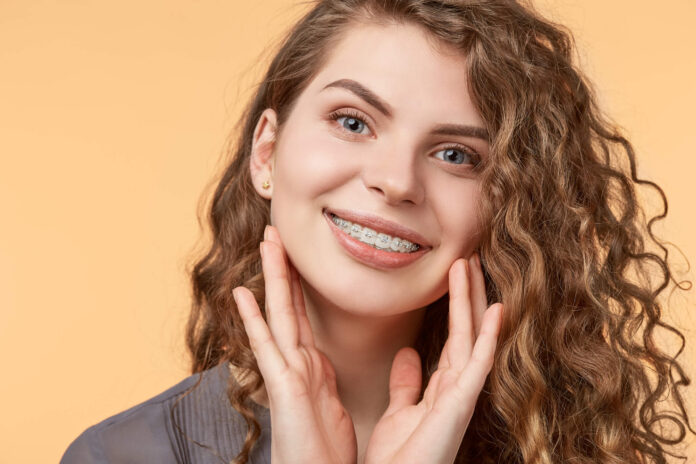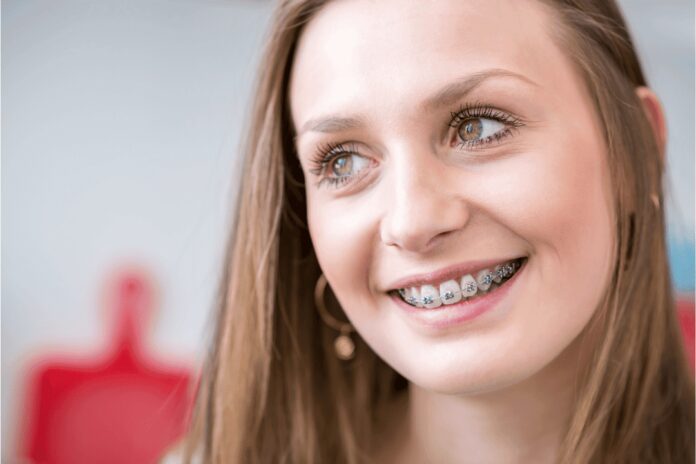Wish to have a sparkling smile but fear you are too old to get braces? Then stick to the end of the article as this common myth is busted.
Braces are defined as dental instruments used to treat ailments, including crooked teeth, crowding, misaligned teeth, or malocclusion. They can be traditional/ metal, lingual, ceramic braces, or clear aligners.
These dental tools put pressure on the teeth, aid them in moving in a specific direction, and help the bone under it change its shape. But contrary to popular belief, wearing a brace has no age limit. You can wear them at any age to ameliorate your dental problems.
When Should You Get Braces?

Usually, it is mostly observed that kids and teenagers get braces to alleviate orthodontic problems; since the body is in the development phase, teeth and the bones underneath are more conducive to straightening. But there is no age limit, and with the improvement of medical sciences, adults can also get effective results from wearing braces.
Many adults are getting braces to help solve their dental issues. Various types of dental braces can be used to improve the smile and boost dental condition. You can visit the official website of Dr. David McSurdy & Staff to learn more about braces and adult dental treatments that can improve a patient’s overall dental health.
How Do Braces Work?

Braces help treat conditions like underbite, overbite, maintaining proper alignment of teeth, crowded or crooked teeth, incorrect jaw positions, and other related jaw disorders.
These orthodontic relics apply pressure on teeth to move their teeth in the desired direction. As the braces attach to the teeth, the underlying alveolar bone gets subjected to pressure. A portion of the bone soon gets dissolved from the pressure, and the tooth moves toward the push. A new bone develops in the vacated place to prevent the tooth from returning to its original location once the braces are removed.
Braces can be kept for 18- 30 months, depending upon your dental condition. In some severe cases of malocclusion, a wider time frame is required to achieve the desired results.
What Should Adults Consider Prior To Wearing Braces?

1. There are various options you can opt for during your treatment. While most people go for traditional braces, nowadays, you also have the options for clear retainers and other modern retainers. Metal brackets will attach to the teeth with a metal wire linking them. The wires have to be adjusted periodically for proper results.
If you go for traditional ones, you should know that the brackets are visible in the case. The brackets can be made according to your tooth color but will still be visible. On the other hand, clear braces use ceramic bonding to get attached to the teeth, making it look more natural while smiling.
2. The risk of periodontal ailments increases with age. It is not uncommon to observe adults losing teeth stability due to erosion of bone tissues and recession of the gum muscles. Therefore, it is essential to have healthy gums and teeth to be considered for braces. Poor oral health can lead to unwanted consequences, including gum ailments, tooth decay, and jaw issues.
3. You have to be patient during the process to receive the desired result. The teeth of adolescents and kids are in the development phase, making it easier for them to obtain the expected growth easily; however, the adult teeth stop growing after some point, making it difficult to correct alignments. In that case, adults will need treatments more than just wearing braces. You will be referred to a periodontist for better treatment.
5 Tips To Care After Getting Braces For Adults

- Purchase the proper floss, toothpaste, mouthwash, and other dental accessories after wearing braces. Not maintaining proper dental hygiene can cause various problems. Use the best practices to eradicate microorganisms and combat ailments like halitosis, infections, and cavity. Read the ingredients to ensure your dental products do not contain harsh substances that can erode the braces.
- You can also consider using interdental cleaning methods to maintain oral health. Interdental brushes provide better coverage and clean efficiently as well. Purchasing water irrigators is a great investment as well. The pulsating water stream helps in removing the debris easily.
- If you use traditional braces, it is not uncommon to observe food particles getting stuck between the wires. Carefully remove the particles without dislodging the wires; you can use soft-bristled toothbrushes to prevent bracing damage. Flossing daily can help in removing food particles stuck between the teeth. Purchase the required floss mentioned by the orthodontist to avoid foul breath and tooth decay.
- It is essential to follow a meticulous diet plan when you are using braces. Your alveoli tissues, teeth, and gums require optimum nutrition to sustain the changes taking place. You cannot include certain food items in your regular diet as it compromises your dental condition. You must abstain from fibrous foods, sticky sweets, popcorn, nuts, whole raw fruits, peanut butter, bagels, and crunchy ingredients.
Avoid beverages like red wine, black tea, and coffee, as they can lead to staining of the braces. Use a mouthwash after consuming a meal to ensure you retain the brace color for a long time. But if you cannot just give up on your favorite beverage, switch to using straws while having them to minimize the damage caused to the braces.
5. Target the bacteria in your mouth to ensure gum problems and infections are kept at bay while wearing braces.
Cost Considerations
The cost of orthodontic treatment with braces can differ greatly depending on the braces type and the individual’s dental complexity. Traditional metal braces are generally more affordable, while newer options like clear aligners tend to be more expensive. A certified orthodontist can provide a detailed price breakdown. Most dental offices offer various payment plans, and some treatments may be partially covered by dental insurance. Additionally, third-party financing options can help spread out the expense over time, making the treatment more manageable financially.
Emotional Impact
For adults, the decision to get braces often comes with emotional considerations. Concerns about appearance can affect self-confidence. It’s important to communicate openly with your certified orthodontist about these feelings. They can offer support and provide examples of successful outcomes. Support groups and counseling can also be valuable resources to navigate emotional challenges. Remember, the goal is a healthier smile, which is a significant investment in your well-being and self-esteem.
Bottom Line
There is no age limit to wearing braces. You can use these dental instruments to get the desired result at any age. They will help in alleviating a dental condition and preventing it from getting worse.
From metal to lingual braces or Invisalign clear, numerous types of braces are available now to treat adults’ dental problems. Choosing braces treatment can be ideal if you want the confidence boost to smile without hiding crooked teeth. It is essential to follow all the guidelines your orthodontist provides and take proper care while using them to get the best results.








